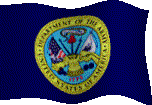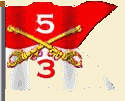Charlie Horse History Forward
8 Oct 1970
CPT Philip Nelson, the Scout Platoon Leader, was shot down south of the abandoned Special Forces Camp at Lang Vei. Nelson and his OB, WO James Ross, managed to execute a successful forced landing. The CE SP5 Greiner suffered an AK-47 wound to his leg. The Huey chase aircraft was minutes behind having stopped at Mia Loc for fuel. CWO Chuck Gibson, in the Cobra Lead, determined that the close proximity of the North Vietnamese Army (NVA) elements to the downed crew required immediate action. With the second Cobra piloted by WO Russ Whipple providing cover, he landed by the downed crew and had them climb aboard his aircraft’s opened ammo bay doors. He relocated his Cobra, with the scout crew on board, an adequate distance away from the NVA position. However, his aircraft had suffered multiple hits and he made a forced landing. With the "Bagger" chase now joining the team, CPT Bob Larkin extracted both crews while WO Whipple covered the extraction. A close-run thing. Both aircraft were destroyed in place rather than attempting any recovery. In the space of just over a month the Troop had five KIAs plus numerous WIAs.
Personal Recollections of CPT Tom Ford
-replacement pilot–destination Vietnam-
During the Vietnam conflict, when the orders to deploy were received there were two points of departure. If ordered to report to Fort Lewis Washington, your destination was most likely Cam Ranh Bay with assignment likely in I or II Corps. Departing from Travis AFB California destined you to arrive in Vietnam at Tan Son Nhut and assignment to III or IV Corps. My first deployment had me depart Travis and assignment in a none flying ground support element south of Saigon for 1967-68. I departed Ft Lewis for my second adventure, arrived in Cam Ranh and then a night flight on a C-123 to Danang.
I arrived at the "Roadrunners" 212th Avn Bn, 1st Avn Bde in the darkness of night. While wandering in search of an open mess hall, I encountered two officers returning from an obvious night at the O’Club. Just as I passed them in the dark, one of them, a Major, turned and told me to stop where I was. He was quite vigorous in his chastising me for not saluting him. I rendered him his due, a crisp hand salute, and we parted. Pondering that episode, I had a mostly sleepless night. I awoke wondering what sort of command have found myself in here in Danang. My interview with the Battalion Adjutant was in the early morning and he was kind to inquire what sort of assignment might I be looking for. I asked him what unit he had that was farthest from this Battalion flagpole. He told me there was an ACT north at Quang Tri, and they were still fighting the war, and if I was serious about that remote unit, they were short officers in several positions. "Yes," I said - "that would suit me fine.” As an Armor/Cavalry officer, I responded, “...yes, send me." On such spur of the moment decisions, one's life changes dramatically.
At this point, 16 Oct 1970, I arrived at Quang Tri to join the Troop. Shortly after my arrival, MAJ Danielson awarded me the command of the ARP, replacing CPT Bob Larkin who rotated home.
14 Nov 1970
MAJ Danielson turned command of the Troop over to MAJ Rodney D. Wolfe.
18 Nov 1970
While conducting Proficiency Check rides in #69-15565, CW2 Benton Miller, Troop Check Pilot, and WO Tom Knopic were killed when the entire tail boom separated from the Huey while in the Quang Tri airfield traffic pattern. There was nothing that could be done with that catastrophic failure and both were KIA. CWO Gibson in a Cobra returning from a visual recon in the AO, observed the crash and hovered his aircraft over the now burning wreckage, blowing the flames away from the cockpit, enabling ground personal to remove the two pilots from the aircraft.
Personal Recollections of CPT Tom Ford:
I was waiting my turn that morning for my proficiency ride along with one other pilot. We were killing time standing in the shadow of the Troop’s Maintenance hangar and observing the exam WO Knopik was getting from CW2 Miller. Full view was provided from our position when the tail boom separated, the Huey took a nose down attitude and plummeted to the ground. Along with several of the Maintenance personnel, I rushed in the back of a ¾-ton truck to the crash site and assisted as much as was possible extracting the two pilots from the wreckage.
The separation of the entire tail boom at the attaching point of four hardened studs and nuts ensued in an investigation of the cause. Metal fatigue and crystallization of the attaching points was the ruling over a month later. The UH-1 had been over stressed at some point in its recent history, but that particular event was never determined. All the Troop’s helicopters were given close inspections of the slippage marks and correct hardening standards on all the attaching points. The assurance that all other aircraft met all standards didn’t totally alleviate all the anxiety present, but the necessity of continued performance in the AO didn’t allow for the doubt to linger long.

.gif)


